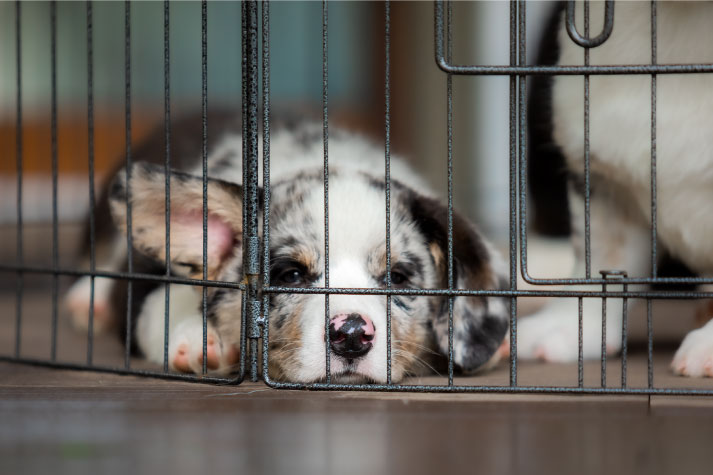


28 Aug
Our furry companions are more than just pets. they are family. Whether you're out for a stroll or relaxing at home, dogs crave interaction and a sense of belonging. Just like their ancestors, the wolves, who thrived in packs, dogs have an innate need for companionship and mental stimulation. However, in the hustle and bustle of modern life, when left alone for long periods, some dogs may develop a condition known as Caged Dog Syndrome (CDS).
Caged Dog Syndrome (CDS) occurs when dogs are confined to crates or kennels for extended periods without adequate social interaction or exercise. This condition can lead to depression, anxiety, aggression, and other emotional disturbances in dogs. Signs of CDS include excessive barking, pacing, scratching at the crate door, anxiety, aggression, and even self-harm, such as biting or licking themselves excessively.
It's essential to recognize these symptoms early especially if you've recently adopted a dog or have a pet that’s spending too much time in confined spaces.
CDS doesn’t arise from just one cause. Dogs are highly intelligent creatures, and a mix of factors can lead to this condition. In a fast-paced life, dogs may face limited socialization, lack of exercise, or insufficient human interaction. Additionally, loud noises or other stressful environmental factors, coupled with confinement, can add to the stress.
For instance, puppies that haven’t been adequately socialized or given enough attention may struggle with navigating their environment, leading to anxiety and nervousness. Older dogs, especially those surrendered to shelters, may experience a sudden change in environment and long periods in crates, further heightening their stress.
If your dog shows signs of CDS, it's crucial to seek help from a vet or a canine behavior specialist. They can provide a personalized treatment plan to help your dog recover. Addressing CDS early can make a world of difference. As dogs may sometimes need to be crated whether during travel, visits to the vet, or while at home.it’s essential to ensure their crate remains a positive and secure environment.
Remember, preventing CDS is far easier than treating it. Ensuring your dog feels loved, safe, and included will go a long way in keeping them healthy and happy.
It’s easy for our pets to feel left out, especially when they spend too much time confined. Caged Dog Syndrome is a serious condition, but it’s preventable with love, attention, and proper care. As pet owners, the responsibility lies with us to ensure that our furry friends thrive in their environment. A little extra care goes a long way, because when our dogs are happy, so are we.

AUTHOR’S BIO
Shivangi Lawania
Storytelling is my way of bringing ideas to life. I enjoy shaping words that spark curiosity and connection, while keeping a strong focus on branding and communication. For me, great content blends creativity with clarity to leave a lasting impression.